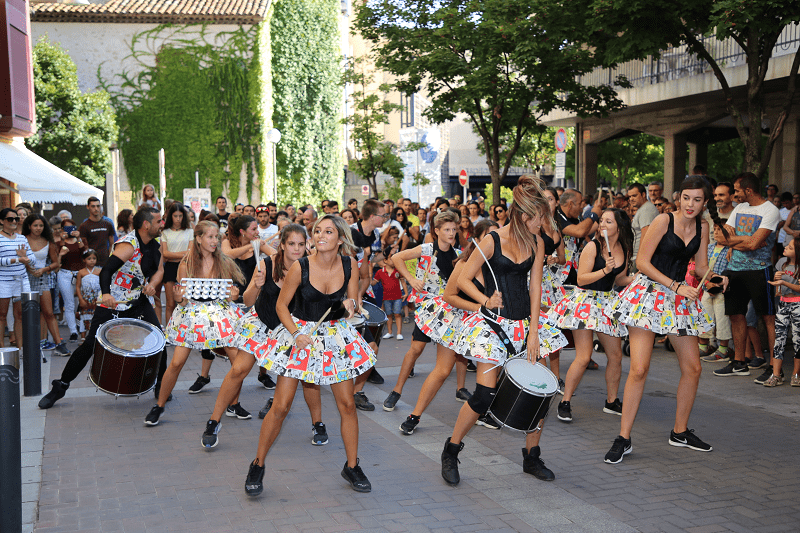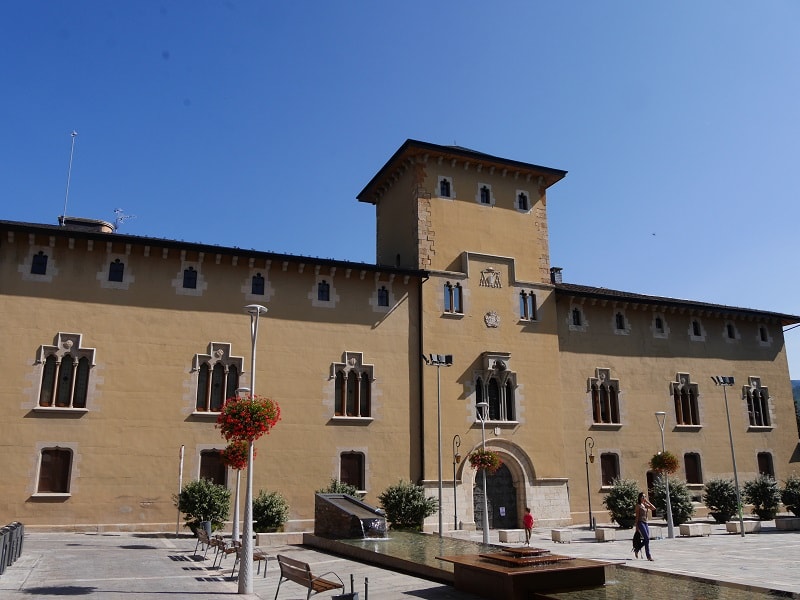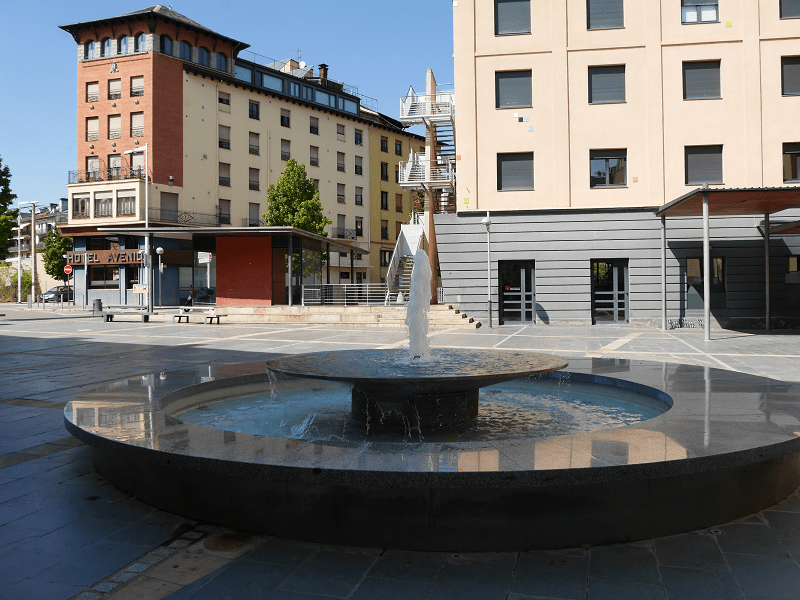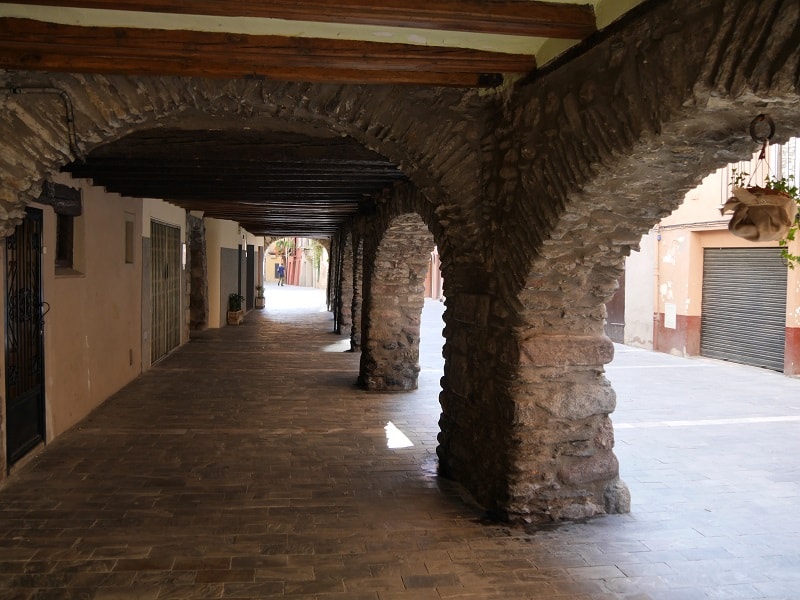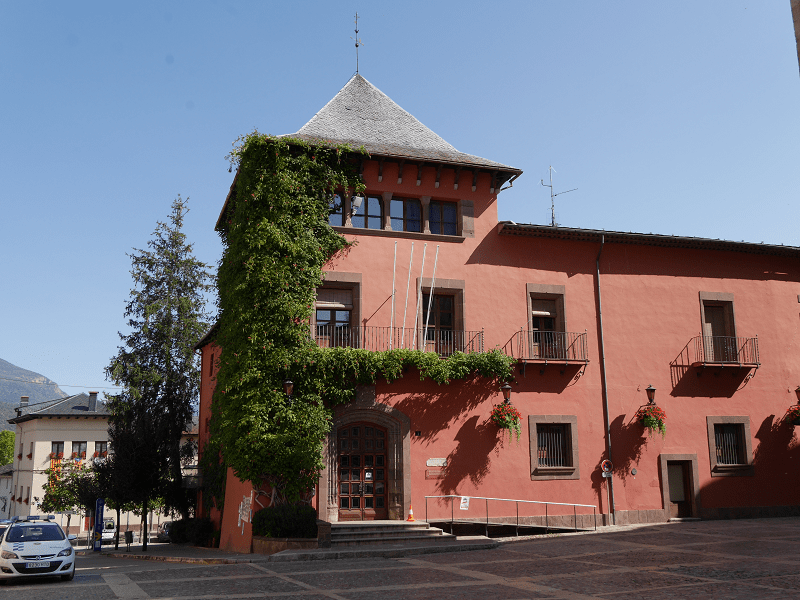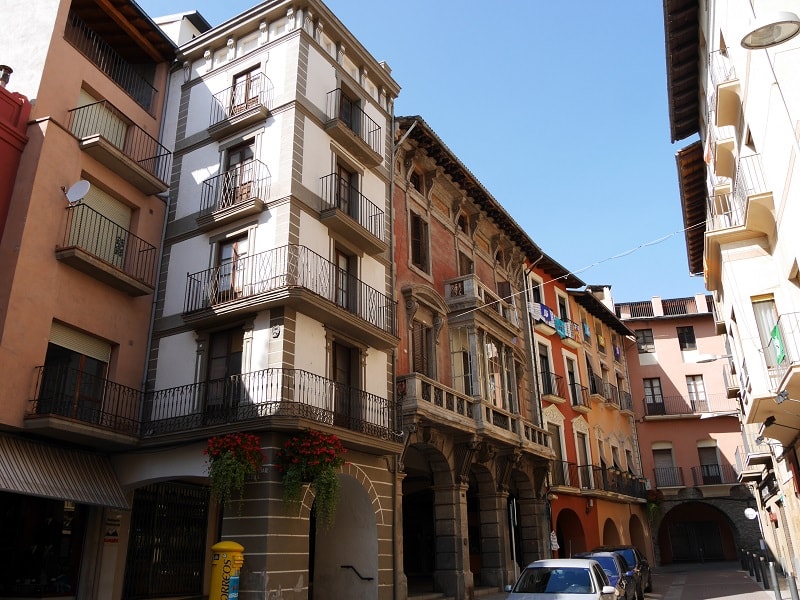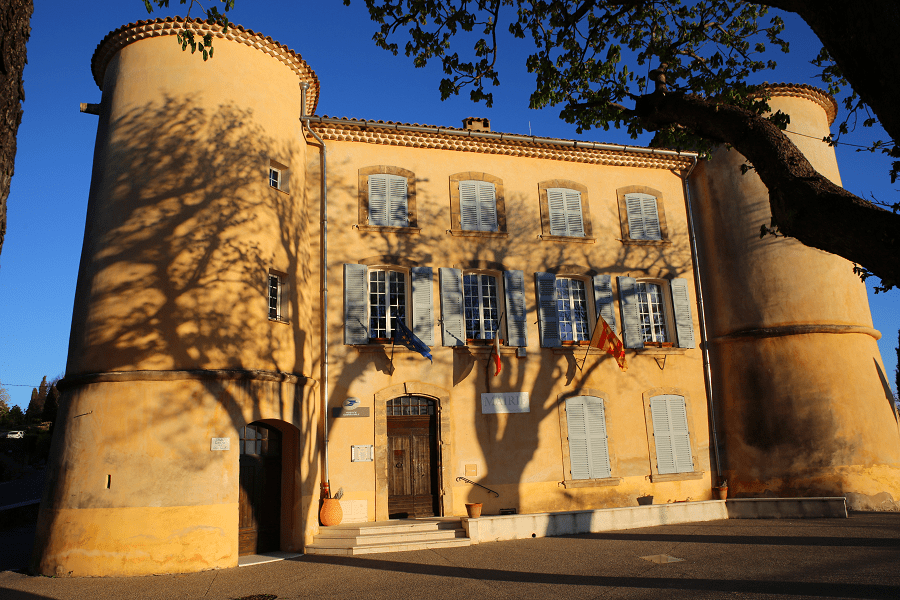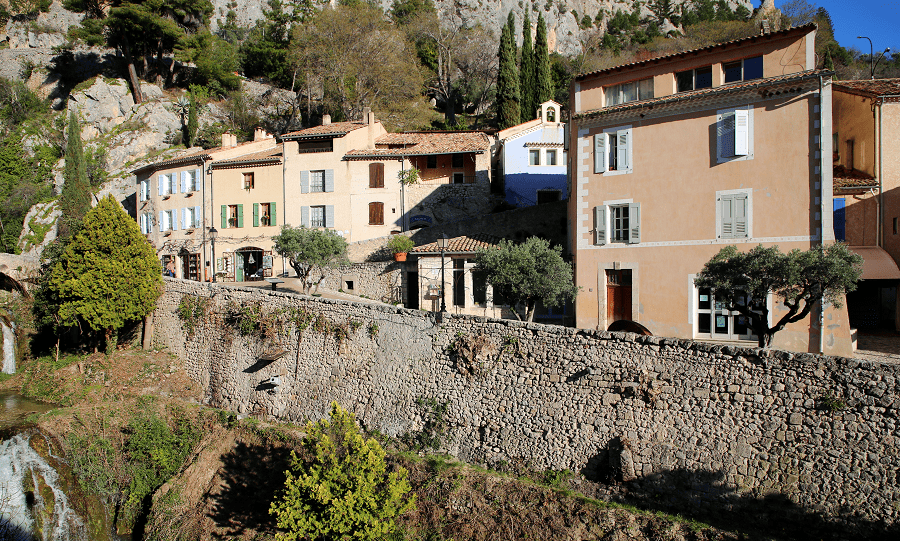La Seu D’Urgell. The Catalan heart of the Pyrenees
La Seu d’Urgell (formerly Urgell or Ciutat d’Urgell) is a town and a municipality in Spain located in the Pyrenees, capital of the county of Alt Urgell, in the province of Lleida, head of the judicial district of the Seu d’Urgell, headquarters of the diocese of Urgell and was the head of the old county of Urgell (Catalonia). It is within the functional area of Alt Pirineu i Aran district, of which it is the most populated town, concentrating 17.4% of the districts inhabitants. Together with Puigcerdà, it has up to thirty percent of the population in the area.
It is located at the confluence of the Segre and Valira rivers, shortly before its conflux on a small river terrace that is the continuation of the Forques plains. The city is part of the Urgellet, a Pyrenean natural region formed by 16 municipalities of the Alt Urgell that along with Andorra corresponded to the original territory of the County of Urgell (Comtat d’Urgell) with capital in the Seu d’Urgell until the expansion to the south.
Alt Urgell is the gateway to the country of Andorra and the proximity to this important demographic and economic activity is to a large extent, one of the reasons for the current growth of the city of La Seu d’Urgell within the scope of Alt Pirineu i Aran.
The patron saints of the city are Sant Ot d’Urgell, Sant Sebastià and the Mare de Déu d’Urgell. While the Virgin of Núria and San Ermengol are the main patron saints of the Diocese of Urgell, but St. Ermengol has a greater presence in the city than the rest of the patrons. Probably for that reason there are several events throughout the year dedicated to Sant Ermengol as the Sant Ermengol Fair, one of the oldest in Catalonia, and the Altarpiece of Sant Ermengol.
The place name La Seu d’Urgell is made up of two different words: Seu of latin origin and Urgell of pre-Roman origin. Urgell or Orgellis was its old name and gave name to the diocese and the county. Joan Coromines interprets that its meaning is related to the presence of water, which is likely if the specifically Pyrenean origin of the place name is considered. “Urgell” is derived from the primitive base of Basque root Urtx (Urtx + ellu = Urgell; Urgell + ittu = Urgellet).
The Iberian settlement of Arse-durgui (or Arse d’Urgui) was on the hill of Castellciutat. At that time the hill was called Puiolo Urgelli. Where the village of Arse-durgui had been, the Civitas Orgellia was built, and here is the origin of the name Castellciutat, which until the 18th century was simply known as the City (Ciutat) and later the part Castle (Castell) was added because of the existence of an old castle that had been the residence of the counts of Urgell.
Shortly after the destruction of the former Orgellia, a new neighborhood was created, with new seat of the Dioceses of Urgell, called vicus Sedes Urgelli: Vicus of the Latin meaning neighborhood, such as the city of Vic; Sedes Latin for seat meaning here the throne or cathedra of a bishop that exerts a jurisdiction, cathedral church and capital of a diocese. Over time, Sedes Urgelli gain importance and lost the word vicus, while civitas Orgellia lost the word Orgellia and became known simply as Civitas or Ciutat until the XVIII century. More history see here
According to Juan Antonio de Estrada “the city of Urgell” is commonly called “la Seu d’Urgell for the dominance and great preeminence of its Holy Church”.
The city is located in the confluence of the two main rivers, the Segre and the Valira, located on a plain about seven kilometers long and at only 691 m altitude, it is surrounded by high mountains. The flat plain called La Seu or La Seu de Ribera is formed by Segre.
The situation of La Seu d’Urgell in one of the most important communications crossroads in the Catalan Pyrenees explains its exceptional historical role, and that of the county of Urgell as one of the keys to the reconquest. Its located on the major junction of the roads to Andorra, Cerdanya and lower Segre. Along the Valira there is a mountain range, where the remains of two great fortresses are found: the Ciutadella and the Castell (in Castellciutat), both very important to the history of the town.
The small plains or banks open around the Segre are separated by gorges. To the north bordered by the municipality of Valls de Valira, to the west by Montferrer and Castellbò, where the airport of Seu d’Urgell is located, to the southwest with Ribera d’Urgellet, to the southeast with Alàs and Cerc and northeast with Estamariu.
The main tourist attractions and architecture
1. Cathedral of Santa Maria (Catedral de Santa Maria). The Cathedral of Santa Maria d’Urgell, called Cathedral of la Seu d’Urgell or Cathedral of Urgel, is a cathedral located in the city of la Seu d’Urgell, (Alt Urgell), seat of the Diocese of Urgell. The cathedral is the seat of the diocese and is dedicated to Saint Mary. The Cathedral of Urgell is considered unique within the Catalan Romanesque for the Italianate-style features on the ornaments of its facade.
The construction of the cathedral was begun in 1116 to designs by the master mason Ramon Llambard and is therefore one of the oldest cathedrals in Catalonia. The cathedral gives the name of the city. Originally referred to as the City of Urgell, it is now called “See of Urgell (La Seu d’Urgell), derived from the Latin Sedes Urgelli, meaning that the town is the episcopal see of the Bishop of Urgell).
The cathedral is dedicated to the Virgin Mary, patroness of the city, and has a 13th-century statue known as the Mother of God of Urgell (Mare de Déu d’Urgell) and also as the Virgin of Andorra.
2. The Monastery and the Church of San Miguel. The monastery adjoins the southern facade of the Cathedral of Santa Maria. The church of San Miguel is in Romanesque style and was built in the eleventh century.
3. The Canonic street is one of the main streets of the medieval city.
Among other significant architectural buildings of the city: the Hall of St. Dominic, the library of Sant Agusti, the Town Hall, the Church of the Immaculate Conception, the Seminary, Parque del Valira (Spain) and the Diocesan Museum.
The best time to visit the city is Saturday: here on this day the city market is working, where farmers and gardeners come from all nearby cities and districts. Here you can buy any products: meat, poultry, fish, vegetables, fruits, dairy products, sausages, pickles, as well as clothes, shoes, goods for children. There is also a flea market where you can buy curious vintage items.
And vice versa after a stormy day of trading on Sunday, the city practically dies out and becomes deserted. Most stores also do not work.
La Seu D’Urgell is also famous for its water sports park (Olympic rafting park Segre). The park was built for the Olympic Games in Barcelona in 1992. Look here for details
Cultural life
Throughout the year diverse manifestations of a folkloric nature take place. For Christmas, traditional acts are performed such as the Missa del Gall, formerly also the Cant de la Sibil•la (Majorcan version is an Intangible Cultural Heritage) which was documented for the last time in 1548. In 2011 this tradition recovered with the city’s own version, already in Catalan, and one of the first poetic expressions in this language. Since 2003, during the Christmas festivities, the Magic World of the Mountains (Món Màgic de les Muntanyes) takes place, and the Tió de la Freita (Tió de Nadal) is one of the protagonists.
On January 17th, the festival of Sant Antoni Abat takes place. Celebrations include: the Three Tombs cavalcade, a popular escudellada, and the Calderada on the Passeig de Joan Brudieu, Festivities are completed with the “Pujada al pal”, a contest in which the participants need to climb a soaped pole in order to reach the reward -a rooster- placed on top of the pole inside a cabas. On January 20, the festival of San Sebastián is celebrated. During Holy Week, the Procession of the Holy Burial (Sant Enterrament) takes place, which origins go back to the year 1603 with the foundation of the Brotherhood of the Most Precious Blood (Confraria de la Preciosíssima Sang) and the caramelles.
On Easter Monday, the people of La Seu and Rodalia celebrate the Trobada, a gathering that takes place on various fields of Bellestar, after which people go to the hermitage of the Virgen de la Trobada (Montferrer and Castellbò).
On July 7, the festival of Saint Ot, the patron saint of the city, is celebrated. Representations of the ‘Altar of St. Ermengol’ ( Retaule de Sant Ermengol) began to be performed in 1957, and in 1998 were interrupted by the restoration of the cloister; It is a theatrical play based on different scenes from the life of the saint, with a text written by Esteve Albert, and that took place in the cloister of the cathedral in August.
On the last weekend in August, the Festa Major is celebrated, which includes Cerdà dance, which is performed by more than one hundred pairs (children and adults) on Sunday morning.
The city has two pairs of giants, Abd Al-Rahman and Constance dating from 1943 and represent a Moorish king and a countess of Castellbò, Ot and Urgell; in 2005 representing a troubadour and a woman from the nobility who recover the name of the first giants that existed in la Seu.
In the Municipal Archive of the City House, in the Old Town, you will find the Llibre verd or Llibre de privilegis (the green book or the book of privileges) of the city of Urgell from 1470; It has the wooden cover lined with leather, and it mentioned the functions and customs of the city of that time.
There is a popular saying that goes: In the chair of La Seu, who rises up does not sit. At La Seu, if you can not put the leg in, put your foot. When in the Cathedral, rings the sign of mystery . Five daughters are worth more than one canonic son. The habit does not make the monk, nor camussa, canon. Or nun or canone (A la cadireta de la Seu, qui se n’alça no s’hi asseu. A la Seu, si no hi pots ficar la cama, fica-hi el peu. Quan a la Seu repique, senyal de misteri.Valen més cinc filles cosidores, que un fill canonge. L’hàbit no fa el monjo, ni camussa, canonge. O bé monja o bé canonge).
Fairs, markets and festivals. Full list
Despite the low population density in the Alt Pirineu, the area hosts 6.6% of the exhibition activity in Catalonia. At La Seu there are numerous trade fairs and markets concentrated throughout the year:
● The traditional Market takes place every Tuesday and Saturday in the Main Street, the Market Square, the Cathedral Square and the Canonges Street.
● The Sant Ermengol Fair, one of the oldest fairs in Catalonia, and the oldest documented fair in the Iberian Peninsula, takes place on the third weekend of October. The name is given by one of the saint patrons of the city: St. Ermengol. Among others, within the framework of the Sant Ermengol Fair, also take place:
● The Artisan Cheese Fair of the Pyrenees.
● The Crafts Fair of the Pyrenees.
● The Encants of Canonges.
● The Spring Fair is celebrated in April and includes an exhibition of the best specimens of brown-haired cow of the Pyrenees (bruna dels Pirineus) of the Alt Urgell and Cerdanya regions.
● The Art Fair, 2007 saw the first edition.
● The Medieval Market of the Canonges has street music, theater, circus, falconers and exhibits of antique trades.
● The Opportunities Market is celebrated twice a year. Most of the stores in La Seu collaborate with a stall where they sell their discounted products.
● Ancient Music Festival of the Pyrenees.
● Business Meeting in the Pyrenees (Trobada Empresarial al Pirineu).
● Meeting of Accordionists of the Pyrenees: oldest festival of traditional music in Catalonia, considered the more important diatonic accordion festival in Europe.
● PICURT: mountain themed cinema show of the Pyrenees.
Cheese Fair
Within the framework of one of the oldest fairs in Catalonia, the Fira of St. Ermengol of la Seu d’Urgell the Artisan Cheese Fair of Pyrenees is celebrated. The Fair of Artisan Cheese takes place during the third weekend of October, and hosts some 40 traditional artisan cheese makers from the entire Pyrenean, from the Mediterranean to the Atlantic and from the north and south sides of the mountain range. Visitors can find cheese made in the Catalan, Aragonese, Navarrese, Basque and French Pyrenees.
Gastronomy, cusines and restaurants
There are about 5 restaurants in the city of a good quality and competitive prices, mostly inside the Old City.
The city is famous for its P.D.O. Products (Protected Designation of Origin *)
● Urgèlia the only cheese with protected designation of origin of Catalonia. Made by the CADÍ Cooperative Society, a centenary company located in La Seu d’Urgell, with a large cheese-making tradition, distinguished in 2015 by the Generalitat de Catalunya with the Creu de Sant Jordi.
● Cadí Butter, one of the two butters with Protected Designation of Origin of Spain. Created by the CADÍ Cooperative Society.
● Veal of the Catalan Pyrenees (Vedella dels Pirineus Catalans I.G.P.) The Regulatory Council of the IGP Veal of the Catalan Pyrenees has the purpose of ensuring compliance with the regulation of production and elaboration, and at the same time works for the promotion of a product differentiated by its high quality.
Food crafts. The star products are cheeses, which are available in a wide variety: from cow, sheep and goat, traditional or new, all worthy of mention. Also worth noting is the rest of the artisans that can be visited: embutidos, aromatic herbs, preserves, mushrooms … and for the true gourmands: jams, coques (type of cake) and nargonins.
Ermengol space – Cheese space
In the second part of the permanent exhibition of the Ermengol Space, a monographic tour around the elaboration of the cheese and the Urgell’s cheeses is offered. This gastronomic product is presented as an outstanding artisan and industrial product of the culture and economy of Alt Urgell. The exhibition is complemented by a collection of historical photographs, sculpture reproductions and an interactive part with cheese tasting.
Shortest distances
From Girona 2 hr 30 min (194 km) via C-25
From Lleida 1 hr 46 min (130 km) via C-14
From Tarragona 2 hr 27 min (177 km) via C-14
From Barcelona 2 hr 20 min (172 km) via C-16
From Madrid 6 hr 22 min (595 km) via A-2
From Andorra 25 min (20.6 km) via CG-1 and N-145
Main information
Area: 15.4 sq km
Population: 12,500
Coordinates: 42.358°N 1.456°E
Language: Spanish, Catalan
Currency: Euro
Visa: Schengen
Time: Central European UTC +1





